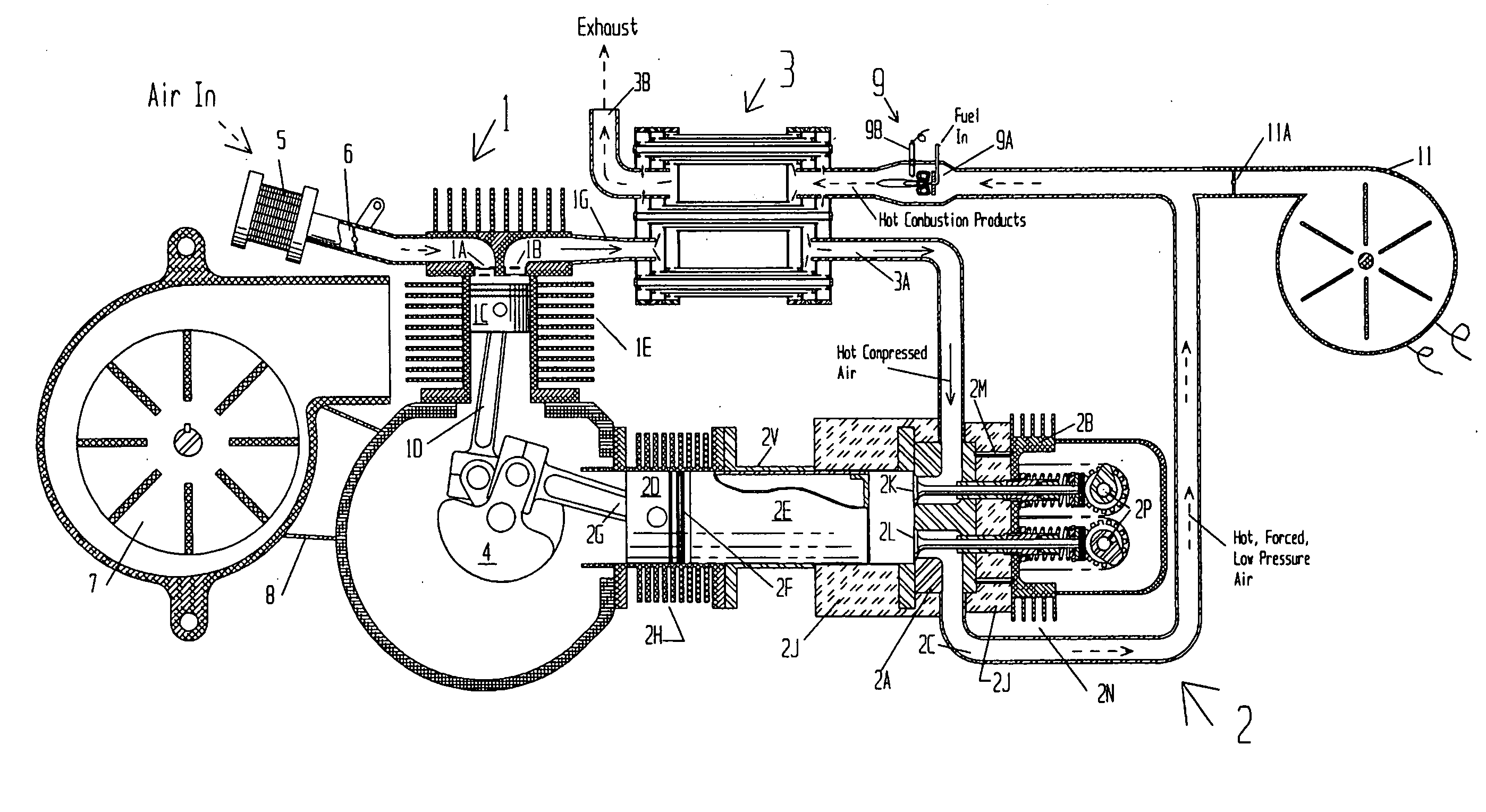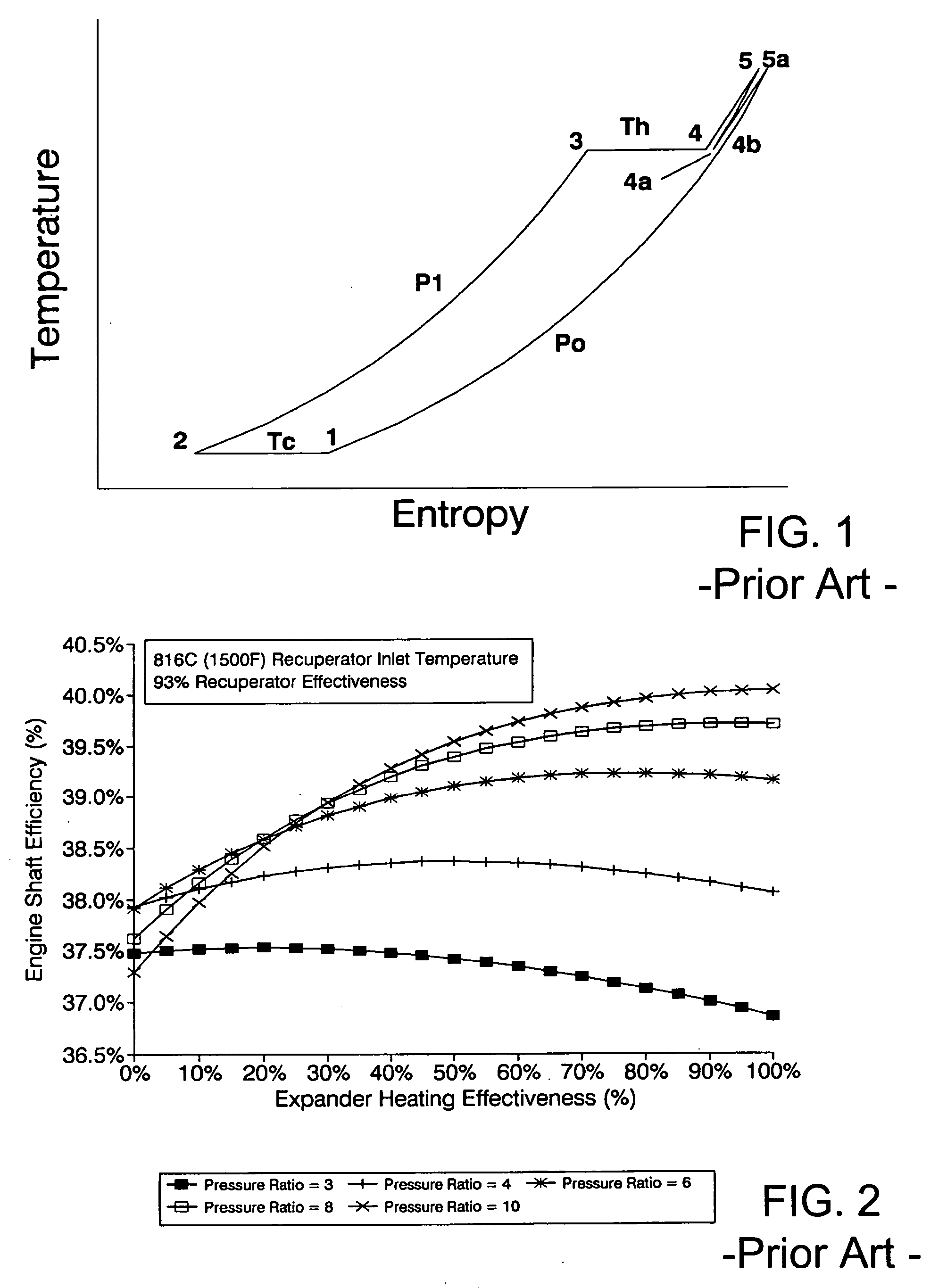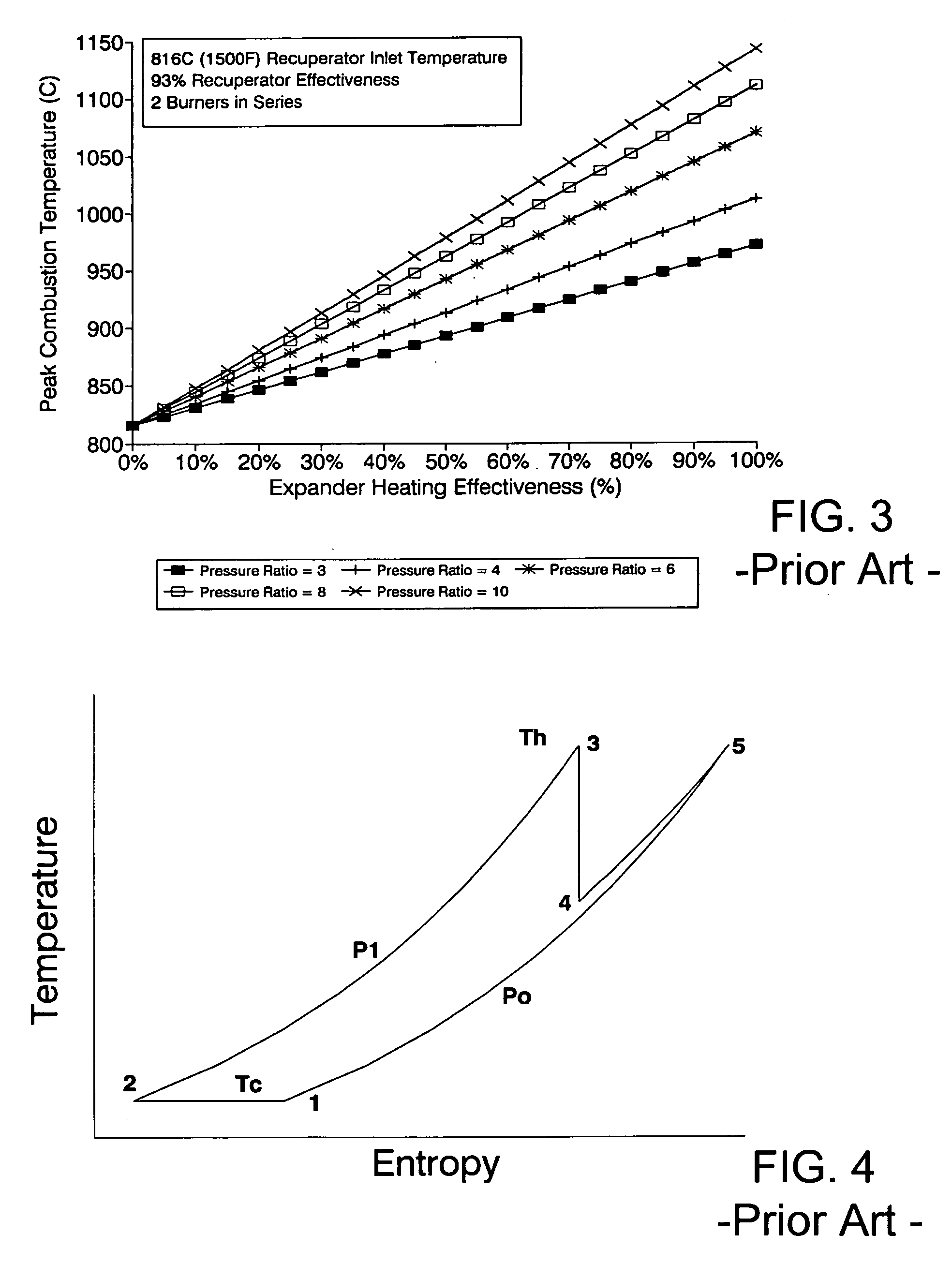Afterburning, recuperated, positive displacement engine
a positive displacement, afterburning technology, applied in the direction of machines/engines, steam engine plants, hot gas positive displacement engine plants, etc., can solve the problems of high manufacturing cost, and achieve the effect of low cost and easy manufacturing
- Summary
- Abstract
- Description
- Claims
- Application Information
AI Technical Summary
Benefits of technology
Problems solved by technology
Method used
Image
Examples
Embodiment Construction
Afterburning, Recuperated, Positive Displacement Engine Characteristics
[0086]FIG. 5 is a functional block diagram of the Afterburning, Recuperated, Positive Displacement Engine. Ambient air is compressed by a compressor and then heated in the counterflow heat exchanger (recuperator) to gain heat energy before expanding in an expander to produce work. Fuel is added to the fully expanded air to form a combustible fuel-air mixture that is burned in an afterburner to generate hot exhaust gases that become the hot gas side of the recuperator. The hot exhaust gases are cooled by counterflow heat transfer to the incoming compressed air and are exhausted to the atmosphere at a temperature slightly above the compressor exit temperature. The expansion of the hot air in the expander produces more work than is required to compress the cooled air in the compressor; resulting in a net work output, in the form of shaft power.
[0087]The compressor is cooled by air or water to reduce the compression ...
PUM
 Login to View More
Login to View More Abstract
Description
Claims
Application Information
 Login to View More
Login to View More - R&D
- Intellectual Property
- Life Sciences
- Materials
- Tech Scout
- Unparalleled Data Quality
- Higher Quality Content
- 60% Fewer Hallucinations
Browse by: Latest US Patents, China's latest patents, Technical Efficacy Thesaurus, Application Domain, Technology Topic, Popular Technical Reports.
© 2025 PatSnap. All rights reserved.Legal|Privacy policy|Modern Slavery Act Transparency Statement|Sitemap|About US| Contact US: help@patsnap.com



